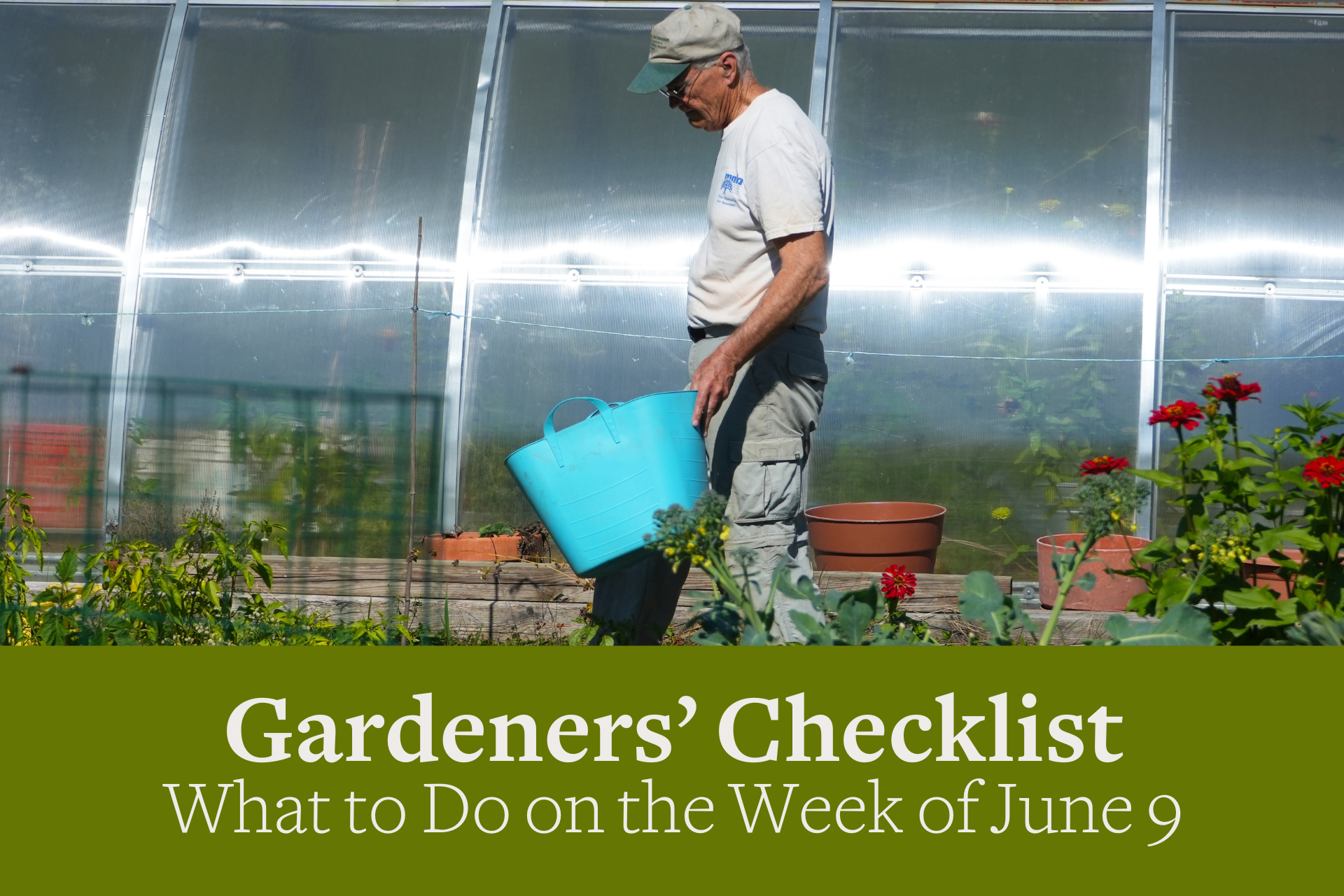You are here
Gardeners Checklist: Here Is What to Do on the Week of June 9
Gardeners Checklist: Here Is What to Do on the Week of June 9
by Ron Kujawski
* Keep planting. Too many gardeners conclude or slow their planting activities in mid-June and turn their full attention to such fun activities as weeding, watering, and fertilizing. That’s too bad because this is still a great time to be planting container-grown trees, shrubs and herbaceous perennials, as well as annual flowers and vegetables.
* Sow seeds of cabbage, broccoli, cauliflower, and collards for fall harvest. Start these in small pots or a seedling bed in the garden. They can be transplanted in mid-July to areas of the garden where peas and other early crops were harvested. Directly sow seeds for carrots, turnips and rutabaga where they will grow undisturbed.
* Incorporate vegetables that have ornamental features into flower beds or in container plantings. This is a great way to grow a few vegetables if you have little or no space for a vegetable garden. Veggies that work well in a flower bed are: leafy greens such as kale (especially the lacinato type) and chard (varieties with colorful stems), eggplant, okra, chives, and ornamental hot peppers. Herbs can be used as edging plants and also work well with annuals in hanging baskets and containers. Grow purple runner beans or cucumbers on a trellis in the flower garden.
* Move houseplants outdoors for their summer vacation and place them in a partially shaded area protected from wind and intense sun. After a week of acclimation in part shade, move amaryllis and other plants that prefer sun to a sunny location. Even though they are on vacation, houseplants don’t like to be ignored. Keep watering them as needed and give them a dose of fertilizer about once per month or as directed on the fertilizer label.
* Prune lilacs and other spring-blooming shrubs that have completed their flowering phase.
* Keep an eye on the blueberry and raspberry patch. Most berry crops are maturing early this year. If you wait for the usual time to harvest, the berries will have passed their peak. Be especially aware of the earlier ripening of berry crops if you get your berries at one of the pick-your-own farms in this area. Strawberries are also early and most are now at their peak.
* Start a compost pile. Moisten the layers as you build the pile. Moisture and warm temperatures are key to the rapid decomposition of the organic matter in a compost pile. For best results, don’t let the pile dry out as the weather gets hotter and drier. If it does dry out, turn over the pile, adding water as you go. Add enough water to moisten the pile without leaving it soggy. A pile that gets too wet will give off foul odors, much like my old sneakers. If we get into a prolonged rainy spell, place a tarp or other covering over the pile until better weather returns.
* Remember Dad this Sunday, Father’s Day. A garden tool, a tree or shrub, or a gardening book makes a nice gift. However, if Dad is an avid gardener with little time on his hands, an offer to lend him a hand in the garden for the day may be the most appreciated gift of all.
Ron Kujawski began gardening at an early age on his family's onion farm in upstate New York. Although now retired, he spent most of his career teaching at the UMass Extension Service. He serves on Berkshire Botanical Garden’s Horticulture Advisory Committee. His book, Week-by-Week Vegetable Gardener’s Handbook, is available here.
Help Our Garden Grow!
Your donation helps us to educate and inspire visitors of all ages on the art and science of gardening and the preservation of our environment.
All donations are 100 percent tax deductible.


